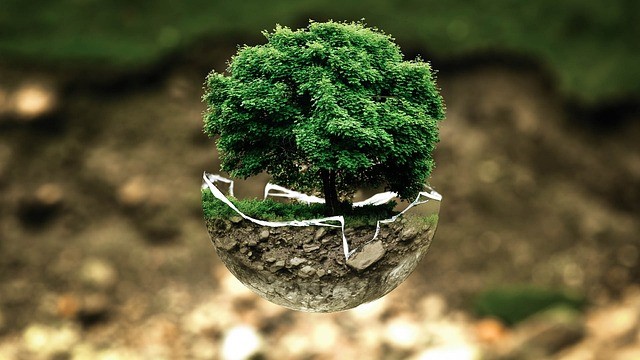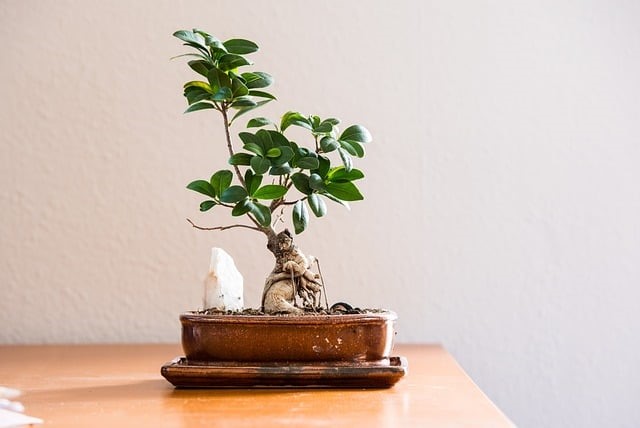How to Do Bonsai Tree Upkeep?
To do bonsai tree upkeep, regularly water and fertilize the tree, trim and shape the branches, and report when necessary. Bonsai trees require regular care to ensure they thrive and maintain their aesthetic appeal.
This involves proper watering and fertilizing to provide essential nutrients, trimming and shaping the branches to create the desired form, and periodically repotting to maintain healthy root growth.
Whether you are a beginner or an experienced bonsai gardener, understanding the importance of proper upkeep is essential.
We will explore in detail how to effectively care for your bonsai tree to ensure its long-term health and vitality.
What Essential Tools Need For Bonsai Tree Upkeep?
When it comes to caring for your bonsai tree, having the right tools is essential. These tools not only help maintain the tree’s shape and appearance but also ensure its overall health.
Here are some most important tools required for bonsai tree upkeep-
Pruning Shears
Pruning shears are an absolute must-have tool for any bonsai tree enthusiast. These specialized shears are designed to make accurate and clean cuts, allowing you to shape and maintain your tree’s branches with precision.
When choosing pruning shears for your bonsai tree, look for a high-quality option with a sharp and durable blade.
This will ensure that you can easily remove excess branches, promote healthy growth, and create the desired bonsai tree form.
Wire Cutters
Wire cutters are another vital tool for bonsai tree upkeep. When styling your bonsai tree, you may need to use wire to train and shape its branches. Wire cutters are specifically designed to cut through the wire neatly, minimizing any damage to the tree.
Having a pair of wire cutters with a sharp cutting edge is essential to ensure precision when removing or adjusting the wire on your bonsai tree.
Root Rakes
Root rakes are indispensable for maintaining the health of your bonsai tree’s root system. These rakes help to gently separate the roots when repotting, ensuring proper spacing and improved nutrient absorption.
By loosening the compacted roots, root rakes promote optimal root growth and overall vitality. Choose a root rake with sturdy, but not too sharp, tines to avoid damaging the fragile roots of your bonsai tree.
Watering Can
Use A watering can be designed specifically for bonsai tree care is crucial for maintaining optimal moisture levels. The small spout of a bonsai watering can allow for precise watering without splashing or overwatering the tree.
Look for a can with a narrow spout that enables you to reach the base of the tree easily. This way, you can ensure the water reaches the root system efficiently and evenly, supporting healthy growth and preventing issues such as root rot.
How to Do Bonsai Tree Upkeep?
Lots of ways to follow to make your bonsai tree healthy and green. Here are some of them:
Watering Techniques For Bonsai Trees
Proper watering is one of the most crucial aspects of bonsai tree upkeep. Without the right watering techniques, your bonsai tree can suffer from dehydration or root rot, leading to poor growth and even death.
Also, proper watering is essential for the overall health and vigor of your bonsai tree. Here are a few reasons why proper watering is crucial:
| Bonsai Species | Watering Frequency |
| Pine, Juniper, Spruce | Water moderately every 2-3 days |
| Maple, Elm, Beech | Water moderately every 1-2 days |
| Tropical Bonsai | Water frequently, keeping the soil moist |
The Importance Of Proper Watering
- Promotes root growth
- Prevents dehydration
- Aids nutrient uptake
- Maintains the balance
Pruning And Shaping Your Bonsai Tree
Pruning is an essential aspect of bonsai tree care, as it helps maintain the desired shape and size of your tree. It involves selectively removing branches and foliage to encourage healthy growth and achieve the desired aesthetic appeal.
The art of pruning involves a delicate balance between maintaining the tree’s natural beauty and promoting its overall health.
To ensure successful pruning and shaping of your bonsai tree, here are some valuable tips to keep in mind:
- Use clean and sharp pruning tools to avoid damaging the tree.
- Prune during the appropriate season, as different tree species have varying optimal pruning times.
- Consider the desired shape and overall design of your bonsai tree before making any cuts.
- Regularly monitor the growth of your bonsai tree and adjust your pruning and shaping techniques accordingly.
- Keep in mind the natural growth patterns of the tree and aim for a harmonious balance between the desired form and the tree’s inherent beauty.
- Be patient and allow time for your bonsai tree to develop and mature.
Bonsai Tree Fertilization And Nutrient Requirements
Bonsai trees are delicate and require specific care to thrive. One crucial aspect of bonsai tree upkeep is fertilization and meeting their nutritional needs. Before we dive into fertilization, it’s essential to understand the nutritional needs of bonsai trees.
Like all living organisms, bonsai trees require a variety of essential nutrients to survive and thrive.
These nutrients include macronutrients such as nitrogen (N), phosphorus (P), and potassium (K), as well as micronutrients like iron (Fe) and manganese (Mn). Each nutrient plays a unique role in the tree’s overall health and growth.
| Nutrient | Function | Symptoms of Deficiency |
| Nitrogen (N) | Stimulates growth and foliage development | Pale, yellowish leaves and stunted growth |
| Phosphorus (P) | Promotes root development and flowering | Poor root growth and reduced flowering |
| Potassium (K) | Aids in overall tree health and disease resistance | Leaf discoloration, weak branches, and increased susceptibility to diseases |
| Iron (Fe) | Essential for chlorophyll production and leaf color | Yellowing between leaf veins (chlorosis) and leaf whitening |
| Manganese (Mn) | Contributes to photosynthesis and enzyme activities | Interveinal chlorosis, reduced growth, and malformed leaves |
Bonsai Tree Pest And Disease Control
Bonsai trees are a delicate and cherished addition to any home or garden. However, they are not immune to pests and diseases that can damage their health and appearance.
It is crucial to understand how to properly care for your bonsai tree to prevent and address any pest or disease issues that may arise
Like any other plant, bonsai trees can be prone to certain pests that can cause significant damage if left untreated. Some of the most common pests that affect bonsai trees include
| Pest | Control Methods |
| Aphids | Regularly inspect the tree for aphids and remove them by hand. – Use insecticidal soap or a gentle spray of water to control their population. |
| Scale Insects | Remove scale insects manually using a toothbrush or cotton swab dipped in rubbing alcohol. – Prune heavily infested branches if necessary. |
| Spider Mites | Isolate the affected tree to prevent spread. – Regularly spray it with a mixture of water and neem oil to control spider mites. |
General FAQ
Should I Spray My Bonsai Every Day?
Spraying your bonsai tree with water can be beneficial, but it is not necessary to do it every day. Overwatering through excessive spraying can lead to root rot and other problems. Instead, focus on maintaining proper watering practices and misting your bonsai occasionally to increase humidity levels or to clean the foliage.
Is It Easy To Maintain Bonsai?
Maintaining bonsai is relatively easy as long as you provide proper care. Regular watering, pruning, and fertilizing are necessary. Bonsai also needs the right lighting and temperature conditions to thrive. With attention to these aspects, you can keep your bonsai healthy and beautiful.
Should I Spray My Bonsai every day?
Spraying your bonsai every day is not necessary. Overwatering can harm the plant. Only spray when the bonsai needs moisture, usually when the soil feels dry to the touch. Regular watering and proper care are more important for its health and growth.
Do I Need To Trim My Bonsai Tree?
Yes, trimming your bonsai tree is necessary. Regular trimming helps maintain the tree’s shape, promote healthy growth, and prevent it from becoming too large. It also improves aesthetics by creating a more balanced and appealing appearance. Remember to use appropriate tools and techniques to ensure proper pruning without harming the tree.
Conclusion
Taking care of a bonsai tree may seem challenging, but with the right knowledge and techniques, it can become a rewarding and enjoyable experience. By understanding the specific needs of your bonsai, such as watering, pruning, and proper lighting, you can ensure its health and longevity.



